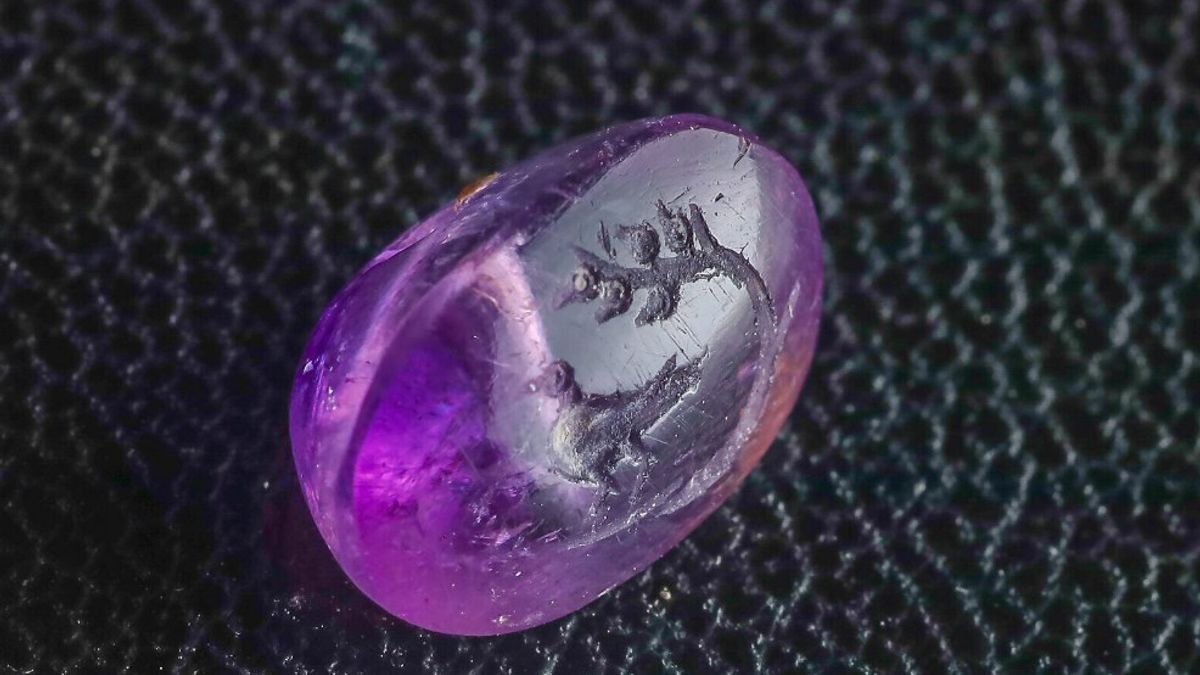JAKARTA – Recently, archaeologists conducting research in the Old City, Jerusalem, got a new finding in the form of a 2,000-year-old amethyst agate. Inside the purple agate there is a carving of a dove with a persimmon plant.
The agate serves as a ring decoration and can also be used as a stamp. Researchers believe the carvings represent images of the persimmon plant, which was one of the raw materials for making perfumes for offerings at Jerusalem's ancient temples.
This is confirmed by the archaeological authority of Israel which states that the persimmon plant is also mentioned in the scriptures as bosem or balsam and has nothing to do with its fruit which is commonly known as persimmon. Persimmon was often used to make expensive perfumes, medicines, and rubbing oils from 516 BC to 70.
Professor Shua Amorai-Stark stated that if the amethyst engraved plant was indeed a persimmon plant as mentioned in the scriptures, then the owner of this seal ring was a wealthy Jew or had influence because the control of the persimmon plant trade at that time was very strict.
“I suspect the owner has a persimmon field ... when he came to the craftsman who made the rings, he probably brought a branch of the persimmon plant so the craftsman could imitate this plant when carving the agate,” said Amorai-Stark.
He also believes the carving of the bird is most likely a dove. Because the carving of a dove is known as a motif that is often used in Greek, Roman, and Jewish traditions. The dove is also a symbol of prosperity and happiness, as well as goodness and success.”
“The dove is known as a positive motif in Greek, Roman, and Jewish traditions. The dove symbolizes prosperity, happiness, goodness and success,” said Amorai-Stark.
However, the age of the ancient amethyst cannot be known with certainty. Experts can only estimate its age to be around 2,000 years, taking into account that the use of jewelry or precious stones was common in the Second Temple era, which refers to the period between 516 BC to 70 AD.
For archaeologist Eli Shukron who conducted excavations in the Old City area of Jerusalem, this amethyst find was very important. "This may be the first time that a very famous and very valuable [persimmon] plant carving has been found, which so far we can only read about in historical accounts," said Shukron.
"Research on these findings can give a glimpse into the daily lives of people who lived during the Second Temple era, during the heyday of Jerusalem," he added.
Although it is not yet known accurately who the owner of the agate is. However, the discovery of purple amethyst agate with persimmon and dove carvings is an important finding that reflects life in the past.
The English, Chinese, Japanese, Arabic, and French versions are automatically generated by the AI. So there may still be inaccuracies in translating, please always see Indonesian as our main language. (system supported by DigitalSiber.id)













